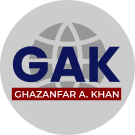Riyadh Gov. Prince Khaled bin Bandar, chairman of the High Commission for the Development of Arriyadh, unveiled the $22.5 billion Riyadh Metro Project at a grand ceremony late Sunday.
The project was awarded to three foreign-led consortia, which will design and construct the 176-km metro project. The three contractors signed the project package with ADA in the presence of Prince Khaled.
Prince Khaled expressed happiness over the commitment made by the Saudi government led by Custodian of the Two Holy Mosques King Abdullah to implement the mega public transport project in the capital city. The project, once implemented, will reduce congestion on Riyadh’s roads and in its suburbs.
“The metro project will change the face of Riyadh,” Prince Khaled said. “The metro project has been the dream project of Custodian of the Two Holy Mosques King Abdullah.”
Construction will begin in the first quarter of 2014.
A presentation of the project’s details was made during the ceremony. A Riyadh Metro animation followed. It explained the physical and technical features of the project. An overview of the Riyadh city model showed components of the public transport network.
Prince Turki bin Abdullah bin Abdul Aziz, deputy governor of Riyadh; ADA President Ibrahim bin Muhammad Al-Sultan; American Ambassador to Saudi Arabia James Smith; German Ambassador Deiter Walter Haller; and senior Saudi officials, company executives, businessmen and foreign diplomats attended the ceremony.
Designs for the Riyadh Metro call for 35.2 kilometers of twin-tube bored running tunnels and a further 13.7 kilometers of cut-and-cover work for a total subsurface length of nearly 49 km.
Preliminary designs of the 180-km metro system have been carried out by consultants Dar Al-Hanasah of Lebanon and Egis Rail of France.
Initially 20 companies from 11 countries bid for the project. It was narrowed down to three contenders.
The Riyadh Metro or the so-called “Miracle of the Desert” consists of six main lines running a total length of 176 km with 85 stations. The proposed metro passes through areas near government buildings, commercial and health centers, educational centers and major universities in Riyadh and its suburbs.
The metro will also connect the King Khaled International Airport (KKIA) through the city center and densely populated areas of Riyadh.
Designs for the major stations were unveiled by the authority in May, with UK-based architect Zaha Hadid’s design chosen for a station at King Abdullah Financial District, Norway’s Snohetta chosen for a Downtown (Qasr Al-Hokm) station and Gerber Architekten of Germany’s designs picked for a new hub station at Olaya.
The High Commission for Riyadh Development (HCRD) said that more than 80 experts completed a technical and financial offer analysis for the Riyadh Metro. The results of the analysis, carried out under the supervision of specialists at the commission was revealed last night.
The metro system will have 96 stations in total, including the main stations, four transfer stations, and five park-and-ride stations. Trains on the six lines will run at 40 km/h. All stations and carriages will be air-conditioned. The driverless electric trains will also be divided into first class, family class and single class carriages.
It was also announced that the bus project is part of the Riyadh transport project. The three-line Bus Rapid Transport (BRT) network will be 85 km. The two completed circular lines will be 83 km. The 18-line community bus service will cover a total of 405 km. There will be a Traffic Control Center (TCC), which is designed to help deliver a world-class customer service experience for the public transport system and will be the central point for customer contact. It will coordinate the whole transport network using Intelligent Transport Systems.

Add Comment